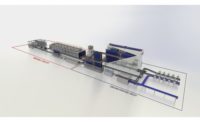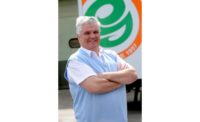
Accessibility and an easy-to-clean design ensures product quality and availability.
HUG AG, a Swiss-based company whose traditions go back to 1877 with biscuit and bakery products, found itself in a quandary when demand for its ‘tartelettes’ shells continued to increase.
The manufacturer’s main priority with the acquisition of a new production line was to ensure gentle, secure product handling without compromising system efficiency, quality and hygiene control. This was paramount to guaranteeing that only tartelettes of the highest quality would be distributed to the customer. Another challenge was the limited space in the production area. To meet their production targets HUG required a high-performing packaging system with a small footprint. Furthermore the manufacturer sought to partner with an experienced and recognized expert within the packaging industry in order to get freshly baked tartelettes into trays.
As a result, the company decided to invest in a new production line and integrate a Delta Robot system LDM MonoPacker from Sigpack Systems, a Bosch Packaging Technology company.
“Sigpack Systems presented a highly convincing technical solution that has a very small footprint and fits perfectly into the available space in the shop floor,” explained Fritz-M. Steiner, HUG’s chief of engineering.
Six Sigpack Systems Delta robots process up to 600 tartelettes per minute. At the head of the packaging line the products enter the LDM MonoPacker on the product conveyor. The trays for the products are un-stacked at the other end of the packaging machine by an integrated two-axis robot, the LTE TrayDenester. The trays are then placed on belts at both sides of the product conveyor and move in a direction that is counter-flow to the product conveyor.
On their way through the LDM MonoPacker, the trays are continuously filled with the tartelettes. Each of the six Delta robots consistently receives data pertaining to the fill level and orientation of every tray. The robots receive this information from the integrated vision systems which reflect a balanced ratio of illumination and camera sensitivity to provide information for the quality inspection of the products and trays.
All products, which do not measure up to quality requirements, are ignored by the robots and separated from the packaging process. Once filled with the predefined quantity of products, the two flows of tray are merged and leave the LDM MonoPacker in the original process direction.
Besides gentle and efficient product handling, flexibility is the main benefit of the Delta robot technology. The system flexibility indicates when it is time to change or implement another format. Due to the vision-controlled tray transport this can be done with minimum effort through loading a new format on the touch screen and changing the end-effectors. This important step in the process is usually completed within five minutes or less.
Robots answer similar call
German marzipan manufacturer Zentis has similar challenges involving the packaging of its popular marzipan potatoes. Again, to meet demand, Zentis required a new packaging line to achieve up to 240 pillow packs per minute, and case packing them into trays of 36 bags each.
Aside from severe floor space restrictions, there were a number of further project-related challenges: integrating existing multihead weighers and check-weighers, adjusting the case packer for various layer patterns, integrating the new line into existing carton infeed and discharge operations and also adhering to strict deadlines in order to be able to commission the new installation on schedule.
While initial tests with a Bosch Packaging Technology SVE 2515 AR bagmaker showed that the target performance could be achieved with two machines without major modifications, special grippers had to be developed for the two Delta robots of the Demaurex Paloma top-loader, so that each robot could simultaneously grip two bags and place them in the trays.
Demaurex was able to implement this customer-specific modification in record time. Achim Minten, Zentis’ European maintenance manager, emphasized that the customization was a considerable achievement.
“Moving towards Delta robot technology meant entering completely new territory for us, but we liked the concept from the very start,” he said. “For an investment of this nature, we were looking for high efficiency and reliable production - and we achieved both.”
Hubert Kaman, production manager at Zentis’ Aachen facility, also speaks highly about the accurate on-site configuration.
“Cooperation with Bosch was very close and highly professional on both sides; especially the complete incorporation of our specifications,” he said. The new installation is now running multi-shift operations to the customer’s complete satisfaction.
And, as with HUG, both installations typify what robotic technology can do to meet ongoing challenges involving output and footprint restrictions.
For more information, visit www.bosch.com.









